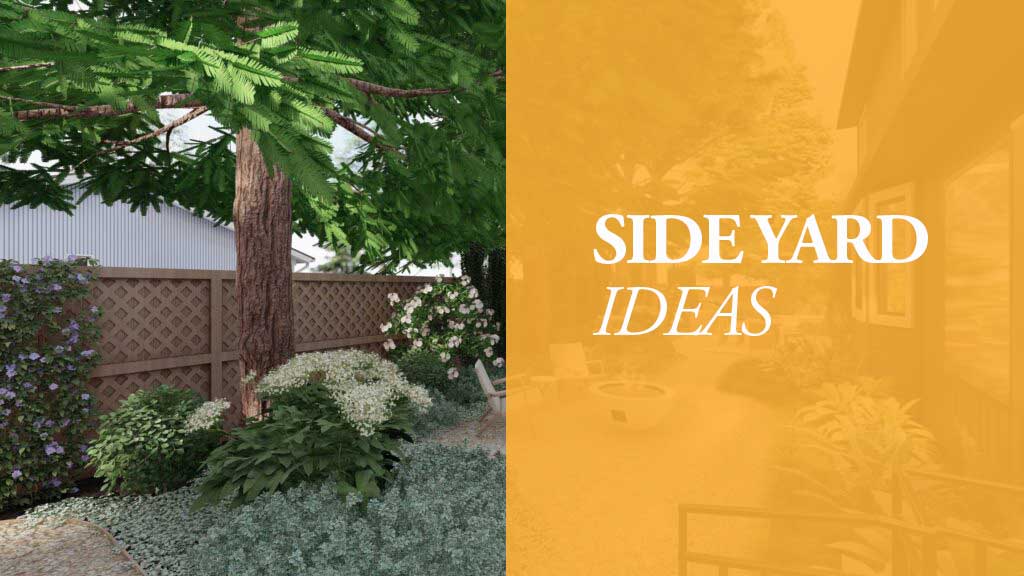In many landscapes, the side yard is a wasted space just waiting to be transformed. It may be little more than a narrow alley leading from the back to the front, or it may be amazingly spacious. Either way, it is too often overlooked, especially since it is frequently hidden away from easy sight, making it perfect for a private garden space.
A garden structure can transform a side yard. Often side yards are shady places where plant choices are limited, restricting what you can grow there. But a structure can add instant garden charm, making even a narrow side yard a place you’ll want to linger.
Some side yards are primarily entry areas. These too can be transformed with a structure, adding importance to the entry and turning what might be a bleak, spot pretty space that welcomes you home after a long day.
Other side yards are primarily narrow strips that allow you to travel between the front and back of your property. Even if you have room for little more than a path, a good-looking arbor or gate marking either end makes for a pleasant journey.
If your side yard is more of a utility area, perhaps housing garbage cans, the kids’ bikes, and other less-than-attractive accouterments of modern living, consider screening them with a trellis or fence and recreate the remainder of the space into a more aesthetic area.
In narrow lots, privacy can be a concern. A fence will block views from the side, and an arbor or pergola will screen the view from above if you’re concerned about neighbors looking down from second-story windows.
With all but the smallest garden structures, your first step is to check local building codes. Often regulations determine how high you can construct a fence and other structures in a side yard as well as how close to the property line you can locate them.
If you’re part of a homeowners association, you’ll also need to check with the governing body to make sure your plans conform with neighborhood regulations. Residents of historic districts might have to meet certain design and building rules too.
When building a structure alongside your house, note any utility connections such as supply lines and meters for natural gas, water, or electrical cables. Many of these connections are made at a home’s sidewalls, which means pipes and wiring may be buried. You’ll have to avoid them in digging holes for post-footings. Most counties and cities offer free underground utility locating services, call to arrange a site inspection before you dig.
Remember too that side yards sometimes are the only means of access for heavy equipment to fenced backyards. If that’s true of your yard, keep access in mind as you design fences, gates, and other structures that might block lawnmowers or, in the case of any large-scale home project, a small backhoe, or other heavy equipment.
Why a side yard Structure
- Carve out a niche for relaxation
- Create a smooth transition between the front yard and backyard
- Provide shade and/or privacy for a side entry to the house
- Act as a background or support for plants
- Camouflage air-conditioning units or garbage cans
- Create a containment area for pets
- Secure the backyard against unauthorized entry


